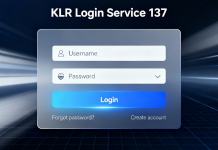Introduction
In today’s digital age, online learning has become increasingly popular, providing a convenient and flexible way for individuals to acquire new skills and knowledge. One crucial aspect of online learning is the design and functionality of the websites used to deliver educational content. In this article, we will explore the key and best practices for creating effective websites for online learning.
Planning and Design
When creating a website for online learning, it is essential to start with a clear plan and design strategy. Here are some important factors to consider:
User-Friendly Interface
– Ensure the website has a clean and intuitive layout that is easy to navigate.
– Use clear headings, menus, and buttons to guide users through the learning process.
– Incorporate search functionality to help users find specific content quickly.
Mobile Responsiveness
– With the rise of mobile learning, it is crucial to design a website that is fully responsive on all devices.
– Test the website on various screen sizes to ensure a seamless user experience.
Accessibility
– Make sure the website is accessible to users with disabilities, such as screen readers for visually impaired individuals.
– Use alt text for images and provide transcripts for audio and video content.
Interactive Elements
– Include interactive elements like quizzes, forums, and discussion boards to engage learners and foster collaboration.
– Use gamification techniques to make the learning experience more enjoyable and motivating.
Content Delivery
Effective content delivery is key to engaging online learners and promoting effective learning outcomes. Here are some tips for optimizing content delivery on a learning website using the WordPress LMS:
Multimedia Integration
– Incorporate a variety of multimedia elements such as videos, animations, and infographics to cater to different learning styles.
– Balance text with visuals to enhance comprehension and retention of information.
Personalization
– Implement recommendation algorithms based on user preferences and behavior to suggest relevant content.
– Allow users to customize their learning paths and set learning goals.
Feedback and Assessment
– Provide timely feedback on assignments and quizzes to help learners track their progress and improve.
– Include self-assessment tools to encourage self-directed learning and reflection.
Community Building
Building a sense of community among online learners is vital for fostering engagement and motivation. Here are some strategies for creating a thriving learning community on a website:
Discussion Forums
– Create dedicated discussion forums where learners can interact, ask questions, and share insights.
– Assign moderators to facilitate discussions and ensure a respectful and supportive environment.
Peer Collaboration
– Encourage peer collaboration through group projects, peer reviews, and collaborative assignments.
– Foster a sense of teamwork and camaraderie among learners.
Conclusion
Creating a website for online learning requires careful planning, design, and execution to provide a seamless and engaging learning experience. By following the best practices outlined in this article, educators and designers can create dynamic and effective online learning platforms that cater to the diverse needs of learners around the world. Embrace the opportunities of digital learning and empower learners to reach their full potential through well-designed online learning websites.
“The future of education is online, and the key to success lies in creating immersive, interactive, and community-driven learning experiences.”






